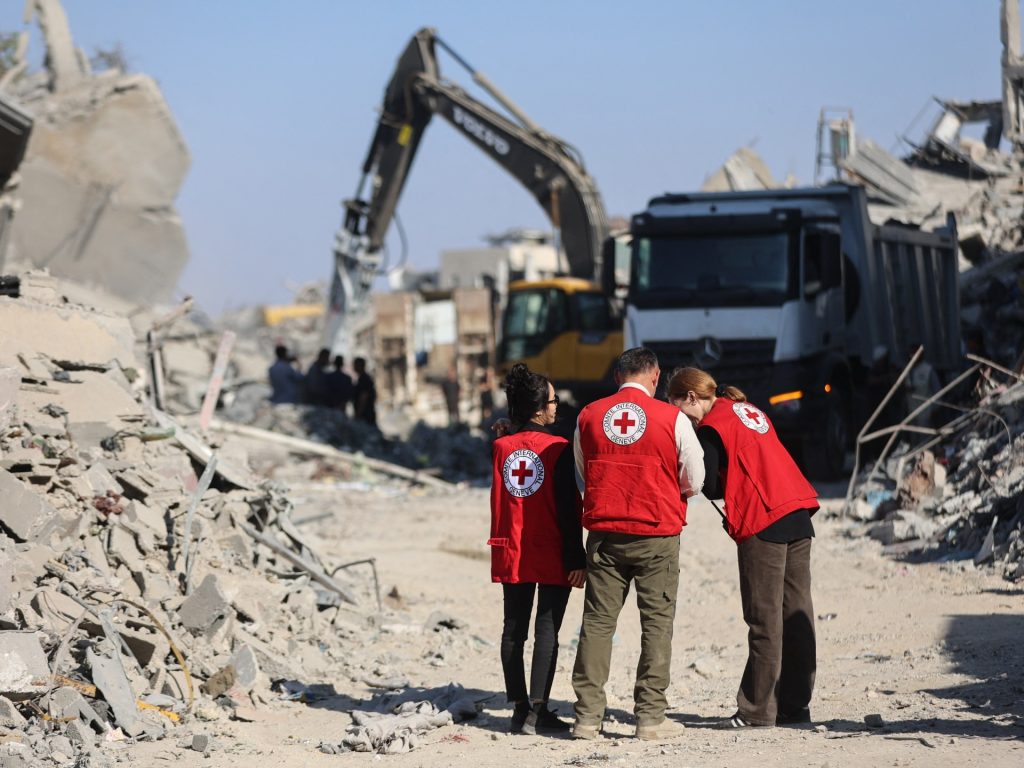Recent Developments in Gaza: The Delicate Balance of Ceasefire and Continued Violence
In a significant yet tragic turn of events, Hamas has handed over the remains of another deceased captive to Israel, shortly after a drone strike in southern Gaza left two Palestinians dead amid a fragile ceasefire. This complex situation continues to unfold, marked by the recently brokered ceasefire and ongoing tensions in the region.
The Ceasefire Agreement
On October 10, a United States-brokered ceasefire took effect, initiating a series of arrangements aimed at de-escalating hostilities between Israel and Hamas. Under this agreement, Hamas committed to returning the remains of 28 deceased captives. As of Monday, 16 bodies have been returned, with the Red Cross taking custody of the latest coffin for transportation to Israeli military forces in Gaza.
Families’ Pleas for Action
Amidst this backdrop, families of the remaining captives are expressing deep concerns, urging the Israeli government to pause the ceasefire if Hamas does not fulfill its obligation to locate and return all bodies. The Hostages and Missing Families Forum has emphasized that Hamas is aware of the whereabouts of each of the deceased hostages, casting a spotlight on the responsibilities implicit within the ceasefire agreement.
Challenges in Recovering Remains
However, the process of locating remains has not been without its difficulties. Hamas negotiator Khalil al-Hayya acknowledged the “challenges” presented by the changed landscape of Gaza due to the ongoing conflict. Some individuals involved in burying the remains or who held knowledge of their locations have either perished in the conflict or lost track of burial sites. In a step towards resolving these issues, Israel has allowed an Egyptian technical team into Gaza to assist in the search, employing excavators and trucks in the effort.
Continuing Violence Amid Ceasefire
Despite the truce, violence persists. On Monday, an Israeli drone strike near the southern city of Khan Younis resulted in two fatalities, with Gaza’s Ministry of Health reporting that eight Palestinians have been killed and 13 injured in the last 48 hours alone. The rising toll reflects the fragile nature of the ceasefire, as both sides grapple with ongoing hostilities.
International Reactions
In light of these developments, US Secretary of State Marco Rubio addressed the situation from Air Force One, asserting that the Israeli strike on a member of the Palestinian Islamic Jihad group did not constitute a breach of the ceasefire. Rubio defended Israel’s right to act when there are imminent threats, asserting consensus among mediators regarding the legitimacy of such actions.
The Humanitarian Crisis in Gaza
The continuing conflict leads to dire humanitarian conditions for the population in Gaza. Over the past two weeks, as approximately 473,000 people have returned to northern Gaza, they confront widespread destruction and critical shortages in basic necessities, including food and water. Younis al-Khatib from the Palestine Red Crescent Society has warned that the humanitarian emergency persists, with mental health care needs likely to last for years.
The Impact on Children
The World Health Organization has raised alarms over the rising mental health support needs, indicating that more than one million Palestinians require assistance—up from about 485,000 before the current conflict escalated. UNICEF has characterized Gaza as “the most dangerous place in the world to be a child,” highlighting the extensive trauma faced by the younger population. Tess Ingram, spokesperson for UNICEF in Gaza, cited harrowing statistics, noting that a classroom of children has been lost each day throughout this conflict, leaving lasting emotional scars.
A Community in Crisis
The children of Gaza face severe psychological challenges, with many having lost family, suffered injuries, or experienced displacement. Efforts to restore a semblance of normalcy and safety for the younger population will take years, underscoring the profound challenges that lie ahead for all of Gaza’s residents as they navigate this ongoing crisis.

